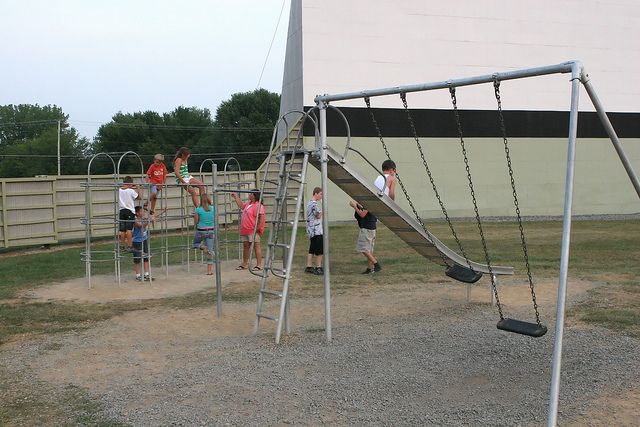During my five decades of designing play systems, I have watched the playground equipment industry proceed through the predictable product life cycle.
When I started, small mom-and-pop shops were making play equipment in nearly every region of the county. These folks had been doing business for decades very comfortably. That all changed starting around 1950. The cause of this was the rise of the automobile and specifically drive-in theaters. At their peak, there were over 4,000 of these across the country. To make the entertainment more family-friendly, they began to add play apparatus. This trend, in turn, gave rise to the first national producers, primarily GameTime and Miracle.
In the ’70s, the composite play structure was introduced. The success of this concept was fueled in large part by a campaign for playground safety. Since the then dominant players were primarily relying on traditional swings and slides, the pitch for change was compelling. The ADA guidelines initiated a second major wave of growth.
The profitability in the industry attracted the attention of what we now call hedge fund managers. The acquisitions trend led to the consolidation we see today with two massive conglomerates and two independent producers.
The play equipment industry has the same problem as light bulb producers in that they have improved the durability of their product so much that they are running out of customers. This has led to the rise of two trends, mega-playgrounds and bespoke products.
Playpower and Playcore are at a handicap to adapt to the new market as their major asset is the production capacity of a product range with rapidly diminishing returns. This will inevitably lead to shrinking capacity in both production and distribution.
Some companies seem to be pivoting well to this trend. Kompan has completely reinvented itself. Smaller companies and imports are finding niche markets and will survive.
It will be interesting to see how the conglomerates manage the transition. Will they be able to maintain their overall structure or sell off their smaller producers?
The core question is, what does this mean for children?
While the future is challenging for the industry, there is some good news for kids. The mega-playground designers and clients now find themselves in a buyer’s market. This allows them to request innovative products. We have already seen this in the availability of surface mount spinners that have become a standard.
The downside is that millions of playgrounds will sit with fewer and fewer visitors as kids are drawn to skateparks, entertainment centers, and screens.
Park departments are now saddled with major investments with just enough patronage to be required to maintain them. Those in affluent communities will install a mega-playground or two. The bottom line is that the average child in the typical community will grow up with inadequate and outdated play infrastructure.
The story doesn’t end here. Today, there exists a massive opportunity to revitalize the playgrounds in every community. And, yep, you guessed it. This is exactly the mission I’ve set for my current project.


